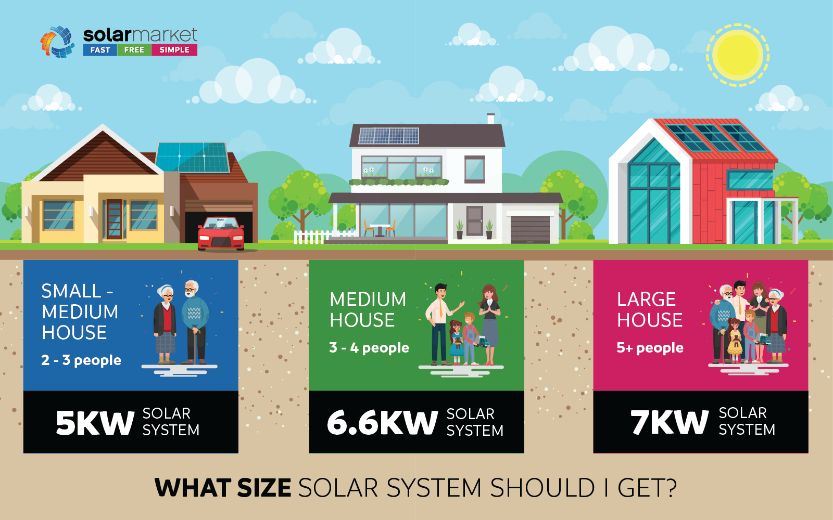Deciding how many solar panels will be suitable for your household can be slightly more complicated than choosing a number and going for it. To get the real benefits of a solar power system, a more useful question to ask is, what size solar power system will best to cover your energy usage while having a fast return on investment. Determining this and deciding on what size solar power system is suitable for you will give you an indication on the number of solar panels required.

What size solar power system to choose?
Your household’s annual energy usage is going to be the best way to figure out what size solar power system will be fitting to your circumstances and most effective at reducing your electricity bills. Thankfully you can calculate your annual energy usage easily by looking over your electricity bills over the past 12 months and adding up the usage. Once you have done this, you can closely match your energy usage to a solar power system size that has a similar estimated energy production.
To assist you with closely matching your energy usage to a solar power system size, we’ve created a table with some of the most common residential solar power system sizes in Australia. Each system size has an estimated annual production, recommended number of solar panels and your expected savings.
System Size
|
Number of Panels (approx.)
|
Production Annually (approx.)
|
Reduction To Bill Annually (approx.)
|
|---|---|---|---|
| 2 kW | 6-8 | 3,000 kWh | $360-$580 |
| 3 kW | 10-14 | 4,900 kWh | $480-$800 |
| 5 kW | 17-20 | 7,100 kWh | $720-$1200 |
| 6.6 kW | 20-26 | 10,600 kWh | $800-$1600 |
| 7 kW | 23-28 | 12,320 kWh | $1200-$2020 |
| 10 kW | 33-36 | 14,380 kWh | $1600-$2800 |
If your preferred size is not on the above table, you can work out the number of panels recommended by multiplying every 250 W by 4, e.g. 1 kW solar power system would require 4 solar panels.
Solar power system’s return on investment
As a guide to working out your return on investment, you can look at average solar power system prices and divide the cost by the system’s estimated yearly reduction to your bills. In most cases, a residential solar power system will pay for itself within 2-5 years of being installed. As solar power systems have a lifespan up to 25 years, this means any savings made after this term are just additional funds for your savings or holidays!
Roof Space
It’s important to note that the amount of roof space you have might be a restriction on the size solar power system and the number of solar panels you can install. For that reason, it is best practice for a solar installer to do a home visit before providing an accurate quote.









